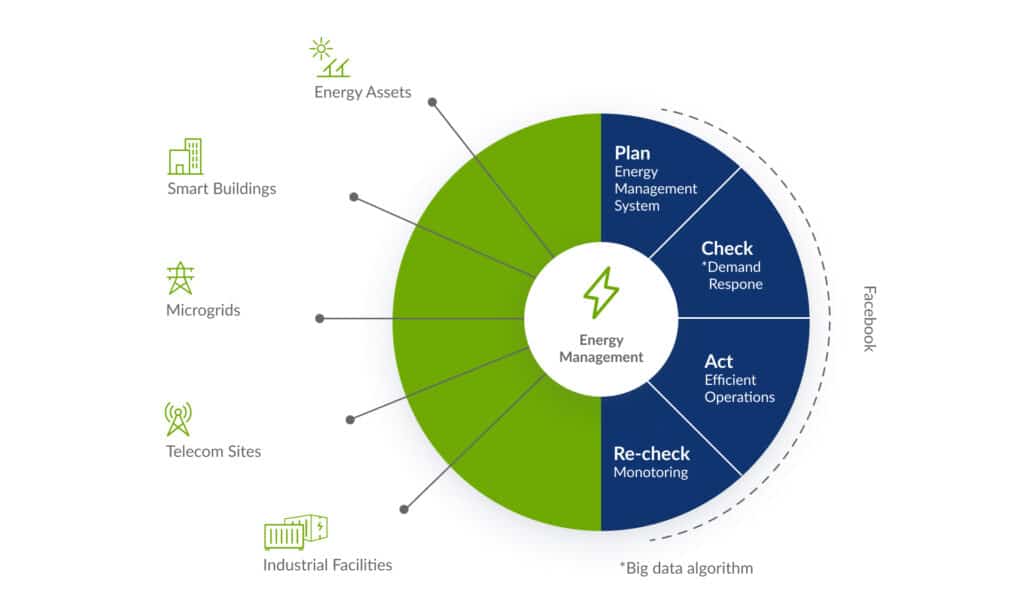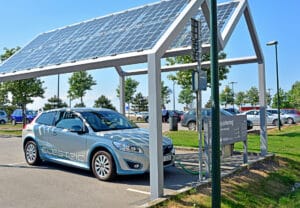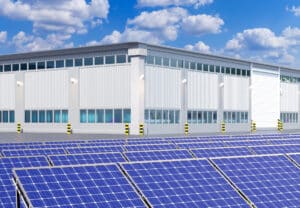The world is waking up to the importance of managing its energy and greenhouse gas (GHG) emissions.
Over $750 billion was committed to global decarbonization efforts in 2021 alone; over half of that was put aside for renewable energy projects. And in the last year, nearly $1 trillion has been invested in energy transition and climate-tech enterprises.
As the level of investment in climate-conscious operations and energy use grows, organizations must manage their energy assets to maximize their potential.
Before we dive into the tools that will provide that return on investment, let’s first briefly discuss what energy asset management is.
What is Energy Asset Management?
Energy asset management is the process of monitoring and managing an organization’s facilities, sites, and, more specifically, the energy assets they rely upon.
This ensures these sites and assets operate as expected, focusing mainly on performance and energy costs.
You can also establish performance thresholds and alerts to activities beyond them to ensure these sites and assets remain within the desired parameters.
What are the benefits of Energy Asset Management?
Energy asset management has a wealth of benefits for organizations to take seriously.
Beyond conservation and efficiency, energy asset management is critical to detect areas for optimization, detect potential malfunctions, and prioritize the most problematic sites instead of a site-by-site audit.
Investing in a good energy asset management solution can:
- Help track and reduce carbon emissions
- Reduce fuel reliance and waste
- Identify fuel theft
- Provide data organization, visualization, and insights
- Dashboards for monitoring assets, sites, and energy KPIs
Organizations and nations have become increasingly conscious of and worried over their carbon footprint and have begun significant commitments to reduce them.
A major step in doing so is becoming aware of how they are using GHG-producing energy resources and where that can change and, in its stead, energy storage or renewable energy assets. An organized climate action plan can help ensure your organization remains focused as you work towards energy and climate-efficient operations.
Energy asset management solutions are integral to that transition and attempt to achieve “climate neutral” operations. So what are some of the tools needed to take charge of your energy assets and operations properly, and how do they contribute to a successful energy management system?
What tools do I need to manage my Energy Assets effectively?
Visibility over assets
One of the most frequent problems plaguing facility managers, especially those managing networks of sites, is visibility. Without a clear way to track the performance of all the sites and assets in your portfolio, the only way to detect a problem is if something stops working completely.
In addition, if you have a widespread network of sites, reaching these problematic sites promptly is often next to impossible, so prioritization is key.
Energy asset management solutions provide overarching visibility over your physical infrastructure, with an interface and even map overlay displaying your assets in real-time.
You can also identify trends and potential issues by examining the live and historical data stream for outlying events or usage.
Alerts
Visibility alone is insufficient to ensure your facilities and assets are operating as expected. The next step is to have a tool to create performance thresholds catered to your assets and usage.
These thresholds can then be tied to alerts that allow managers to act immediately in the case of a malfunction or event like theft. Without these threshold-tied alerts, detecting and mitigating anomalies will be significantly more difficult.
Alerts will save organizations operating costs by eliminating the need for periodic on-site visits, including travel and technician costs. This way, you can stave off potential malfunctions, breakdowns, or full-blown outages and save on potential replacement and maintenance costs.
Performance insights
Now that you have a wary eye on your assets and can be alerted to any issues in real time, it’s time to take a look at that data and what insights you can gain from it.
As we mentioned, some energy asset management solutions provide data organization, visualization, and insights into how assets and sites perform.
These data-oriented insights are critical to understanding where it is most worthwhile to invest in optimizing and which assets need replacing/maintenance most. These insights also dive into sustainability practices, tracking carbon emissions, their source, and how much is being saved from assets like renewables.
These insights will also help mitigate and minimize downtime, reduce wasted energy and operational costs, and ensure your organization’s goals are achieved.
Site and Asset Security
Another issue beyond performance woes is site security. No matter where you are in the world, some people will break into sites to steal devices like lead-acid and other backup batteries.
Sites need more than just optimization and visibility; organizations must be aware and react when something untoward happens. Sensors on-site can be connected to energy asset management solutions, and alerts catered to those assets created.
Certain energy assets like batteries can also have trackers integrated into their manufacture that can be used to provide organizations and authorities a clear location of the asset(s) for successful retrieval.
Fuel sensors can also be installed to ensure fuel stores are not depleted (stolen) faster than expected.
Real-time battery status
When it comes to batteries, the information we can glean from their operation can be very telling as to how efficient your facilities are running. Frequently, generators are the primary backup for any facility or remote site, relying on fuel to keep the lights on when the grid or other energy assets are unavailable.
Batteries need more than just security, however. A range of parameters can be tracked to understand how assets beyond just your energy storage are interacting.
For example, backup batteries may be installed on-site, but when an outage occurs, they are not drawn from, instead relying on a generator. Batteries can remain uncharged, discharge faster than expected, or even be fully charged but underused due to configuration issues.
Energy management solutions help you identify these issues while tracking metrics like state of health and state of charge, voltage, and availability, to maximize durability and warranty.
How to manage your energy assets
Managing energy assets and remote facilities when you only have a few is challenging. A centralized energy asset management platform becomes mission-critical when that becomes hundreds, thousands, or more.
Galooli provides a comprehensive remote monitoring and management platform to track and optimize energy use and carbon emissions for your assets, sites, and facilities.
Our platform provides actionable insights into your network’s operations, helping to identify spots for optimization and prioritize the worst offending sites and assets.
Connect With Us
Are you ready to transform your data into
operational cost savings & efficiency?
let’s get started




























